
The Profile of an Inuit Hunter

In a world where modernity, convenience and modern convenience seem to have taken over almost every aspect of daily life, it is important that we cast our eye towards those that lead a very different existence to our own; a life that isn’t obsessed with notifications.
Greenland is a stronghold for a connectedness to nature, and for a simpler time. Here, we find hunters using tried, tested and perfected techniques. These skills that have allowed these pioneers to stand the test of climate and time in this wild land.
Have you ever wandered what the typical day of a Greenlandic hunter looks like? Even if you haven’t, you have to admit that it is an interesting question. In this post, we seek to describe how Kunuk might spend a typical day in summer and then again in winter. Later, we will also discuss the politics of hunting in Greenland, and how these traditional practices are organised.
Enter Kunuk
Kunuk Abelsen is 25 years old and was born and raised in Kulusuk, east Greenland. Kunuk is one the youngest in a new generation of Greenlandic hunters, maintaining traditions (and innovating, as we will see) into the future. Here, we seek to share Kunuk’s experience of living close to, and off of, nature.
A hunter's winter
In winter, Kunuk travels by boat or dogsled, on the ice if there is ice, or in the water, hunting for polar bears, seals and fish. He stays out until he gets something, the quarry, and Kunuk is in constant relay with other hunters via radio. Once the quarry is caught, the dogs can be fed. When he comes back he cuts the seal, also (also known as “cleaning” the seal) for consumption or give to his dogs immediately.
The boat is a small open boat with a small motor. Kunuk is proud of his boat and never complains even though it needs fixing quite often and is pretty cold; there is no shelter from the cold arctic / glacier winds on his vessel.
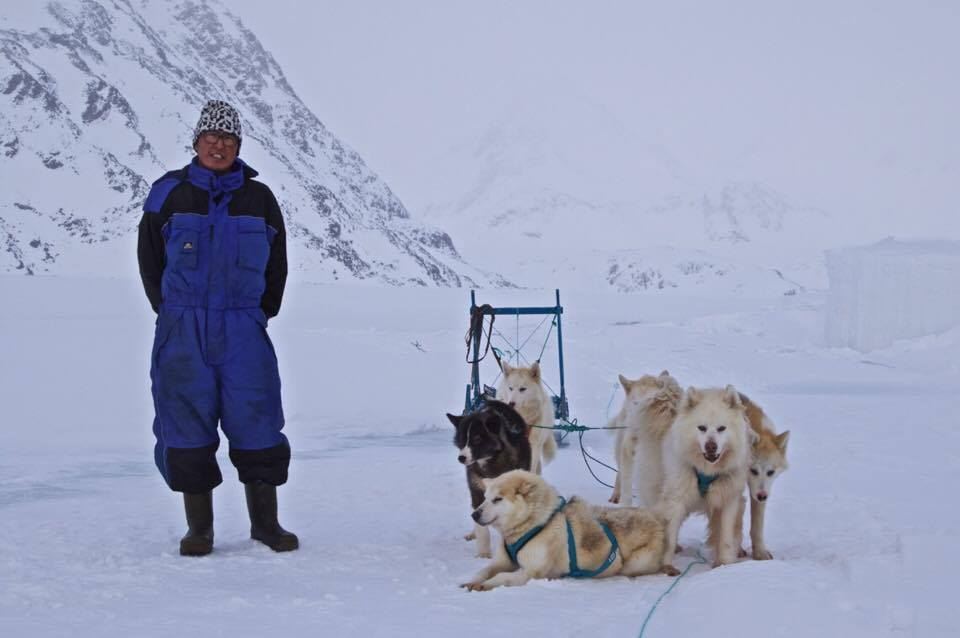
Plenty to go Around
Often, Kunuk catches more than he immediately needs; however, nothing is wasted of course. The seals that he will save for his dogs for later, he keeps in the cold water in the harbour, preserved by the sea (see photo).

Where does the flesh go?
This catch is not sold, and is only for private consumption. What happens with the rest of the flesh? Other parts are sent the to relatives in West Greenland; the game out in the east is considered better than the seal in West Greenland. His relatives are really happy for this.The rest is for his family (mother/father) for immediate consumption, and the rest goes to the freezer for later. Kunuk hunts, but doesn't cook; that is the job of others.
A hunter's summer
What does summer look like for a Greenlandic hunter such as Kunuk? Much less darkness for one thing, the eternal light making longer hunting days possible, also allowing for some preparation for the long, cold winter.
When the sea ice has melted in the summer, the primary mode of transportation is boat. The quarry becomes much broader too, but it still predominantly seal, but also Walrus, whales (Minke whale, Pilot Whale and Orca) as well Greenlandic Shark.
In the long summer days, sunrise is the most active period. Come sunrise, it is is time to prepare the boats. It’s essential not to run out of ammunition.
Kunuk will sail out to the bay around Kulusuk, based on where you saw pray last or heard from others. Scan the waters. Wait. Wait. Wait. Communicate with other hunters on the radio and see if there is potentially something elsewhere.
Kunuk is often out the whole day unless the hunting goes well and then he comes back when the boat can’t carry more (8 seals is the full capacity of the small boat he uses)
Much of this is waiting. Patience is key. While waiting – fishing is an option (the catch is often cod). When you see a whale or s seal, it is time to spring to action to get close enough and catch it and bring it in before it sinks down (only 30 sec before it begins to sink after it is slaughtered) Time is of the essence; It’s a strange idea; so much waiting, and so much action, all of a sudden.
How is a whale hunted in Greenland?
They shoot with rifles, and for the last part of the whale hunt they use harpoons in the final stages. They whale is then taken to shore and butchered. While they wait, they fish. They fish on a line, manually, or with a manual wheel.
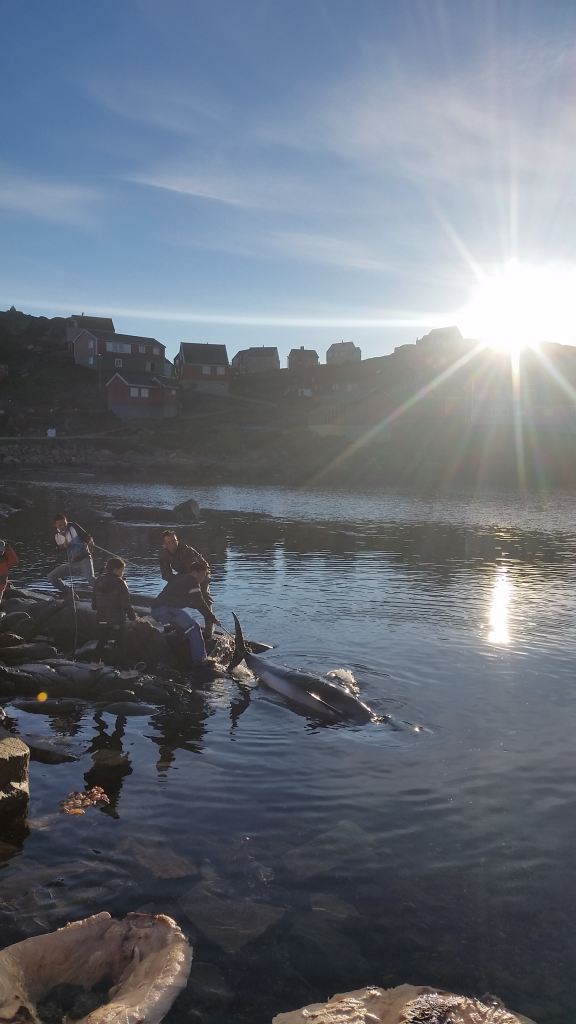
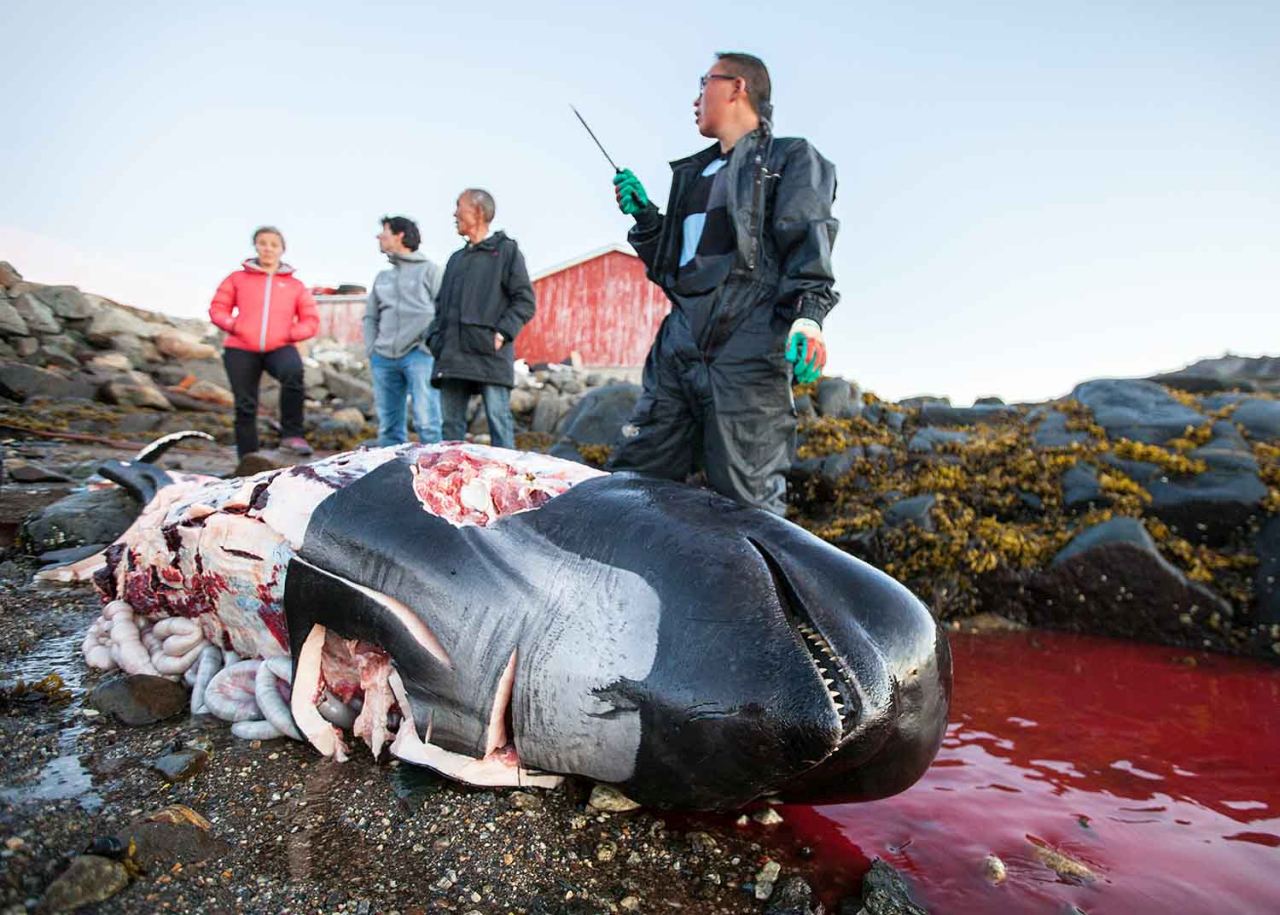
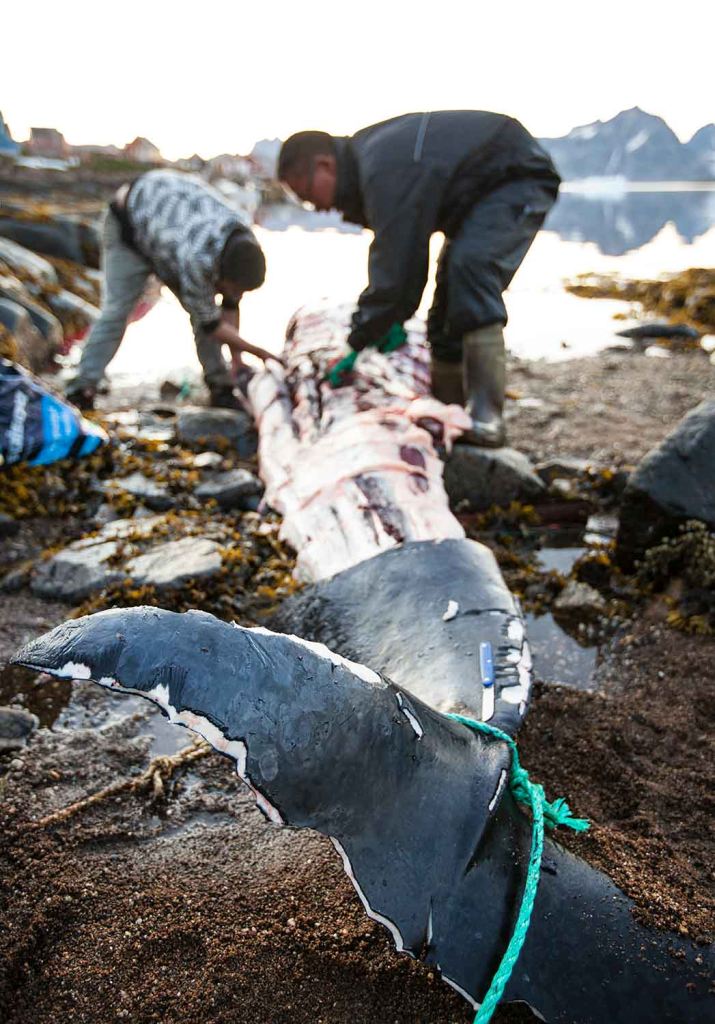
The politics of subsistence hunting in Greenland
To hunt certain species, a hunter needs a permit, such as for certain whales, polar bears, and walrus. Anyone can fish and hunt seal.
Interestingly, only those with an income below a certain income threshold can get a permit, and hunting is subsidized by the government. It took Kunuk a while to get his hunter’s permit; as he earns money on the side with his father’s tourism business also. However, hunting was his true passion.
To hunt Minke Whale, you need to apply for a permit for one whale at a time. And only one permit is valid at a time; if a hunter gets a permit, he gathers a team of 5 hunters and goes out every day until they find one and catch it. Then another hunter in the area applies for the next permit and the same is repeated. There are 12 Minkey whale permits per year. They come in August.
Each whale hunted is important research data – so the hunter needs not only to report the killing, but also to give samples of the whale’s body. This is collected by the municipality and sent to a university in Denmark for further research.
Tricks of the trade, passed down through generations
Kunuk has learned most of his tricks from his father, who is not a hunter; he is the Post Master and Bank Manager and takes care of the shop in Kulusuk. He also often goes out with his older Uncle, Pele, who also passes on his time-acquired skills.
Balancing Tradition and Innovation
Kunuk is unlike many in Kulusuk, and is unafraid of experimenting. He would set up salmon nets in new places where others would never have thought of putting nets, as that is not how it used to be done. More than anything, this highlights the need to balance tradition with innovation.
Now he is teaching his cousin Jourut, 14, what he knows. Jourut does well at school and is a great hunter already. He also has his own boat. How does he navigate the waters of the Greenlandic sea, as he hunts? Kunuk uses his smartphone for navigation. He says it works fine.
Experience East Greenland
Hunting is a way of life for the populations of Kulusuk (pop: 267) and Tasilaaq (pop: 2017) in East Greenland. These are hunter communities through and through; just by being there, you will be immersed in the culture of these relatively small places. If you want to venture further afield, consider a roundup of the Highlights of Greenland, or bask in the Iceberg Spectacle



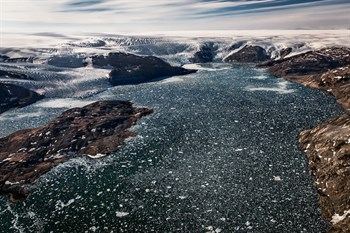




 See what our customers have to say about us!
See what our customers have to say about us!





